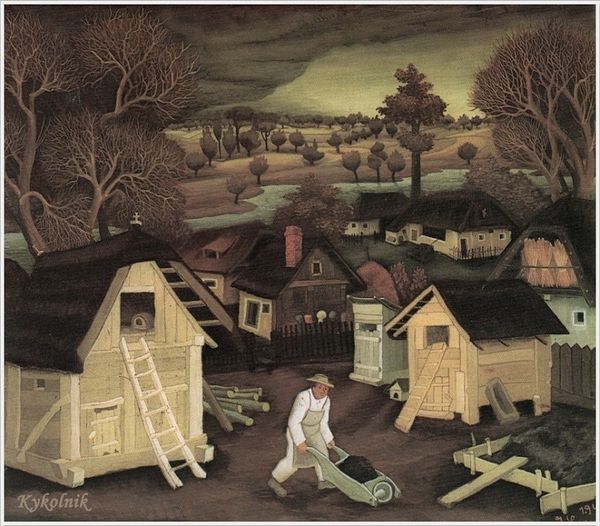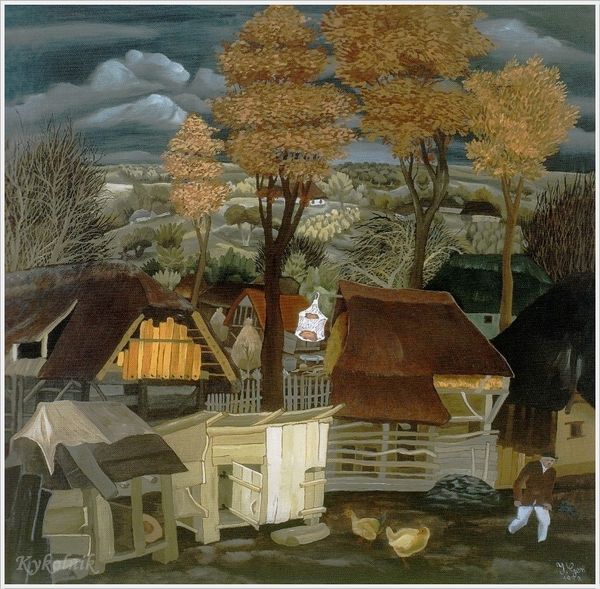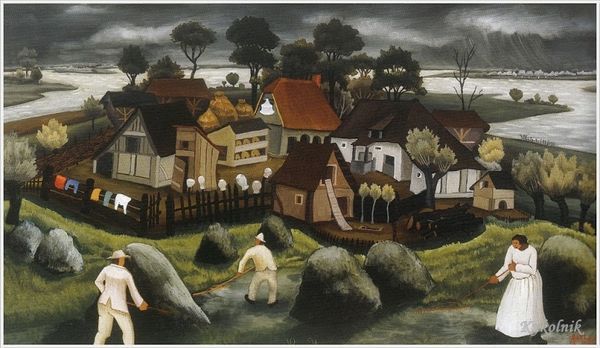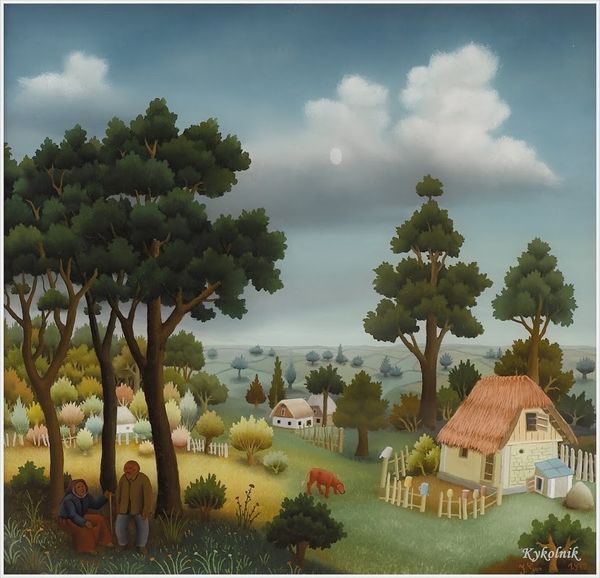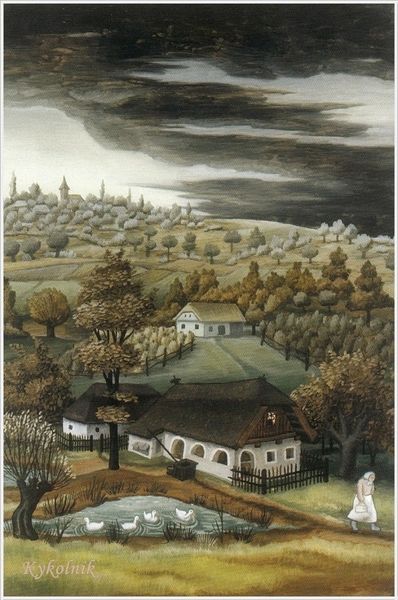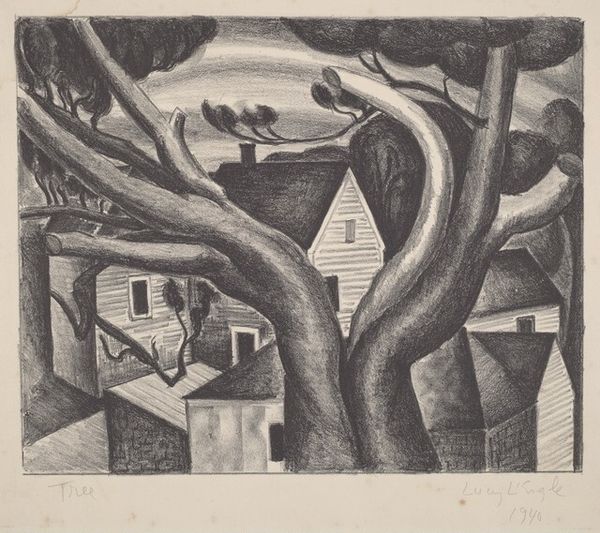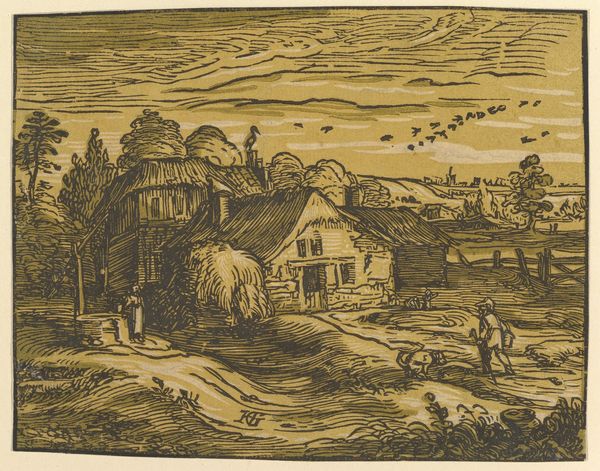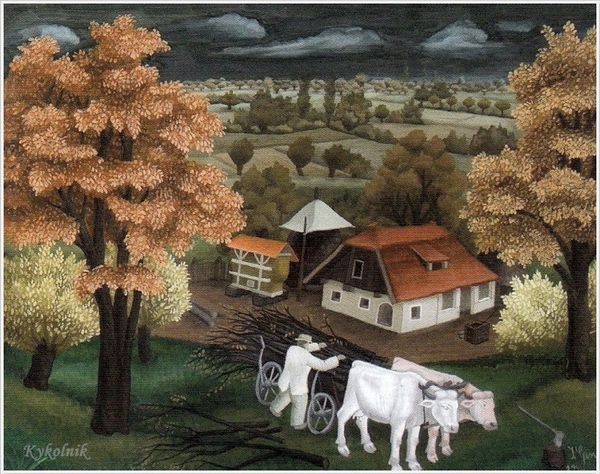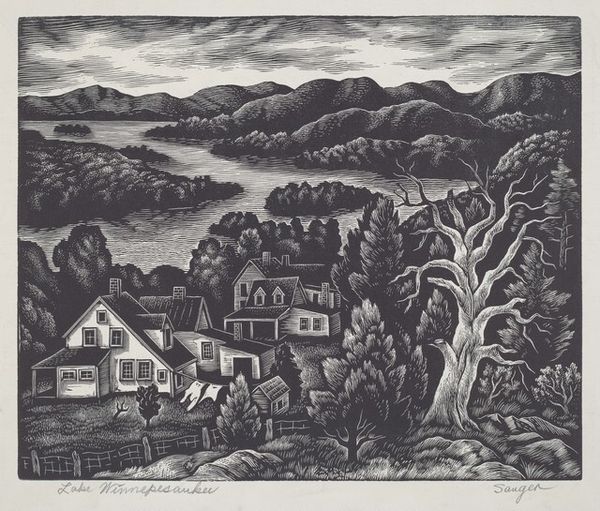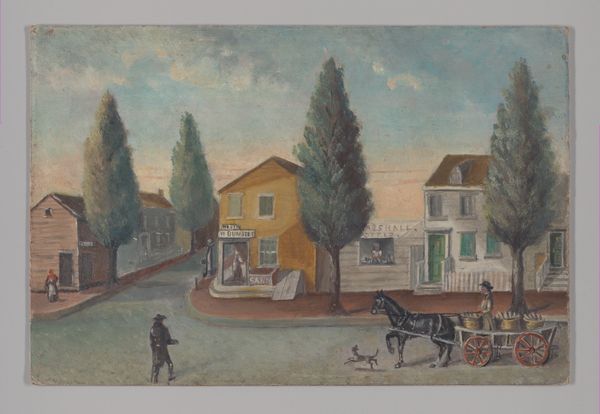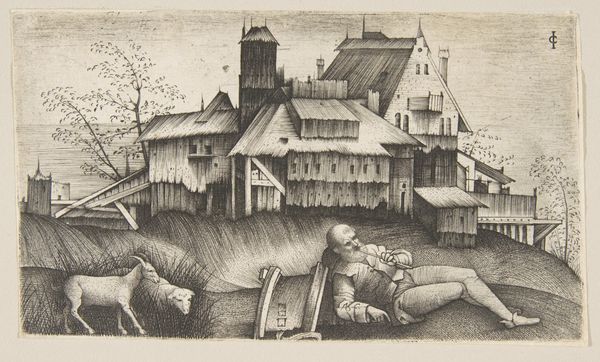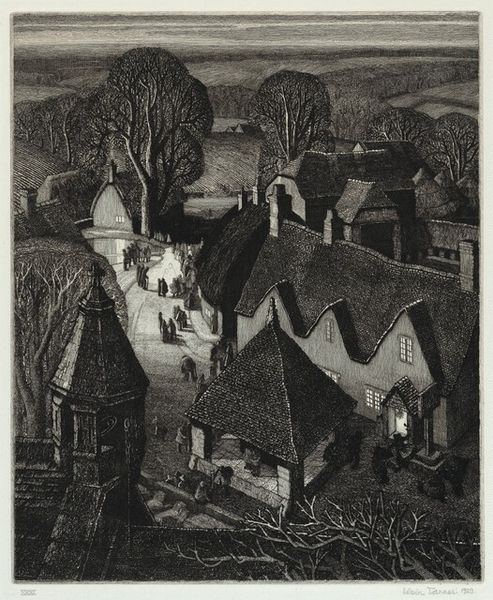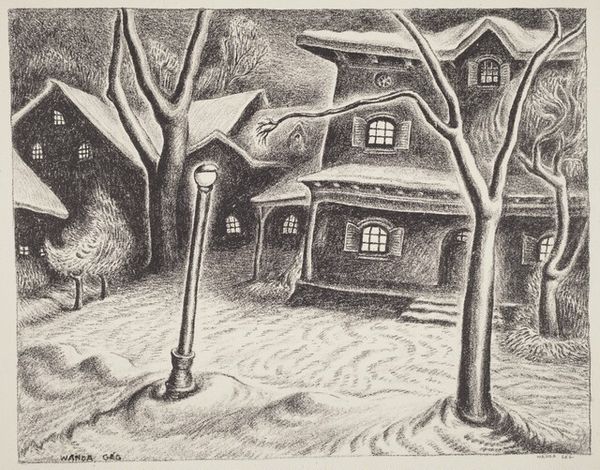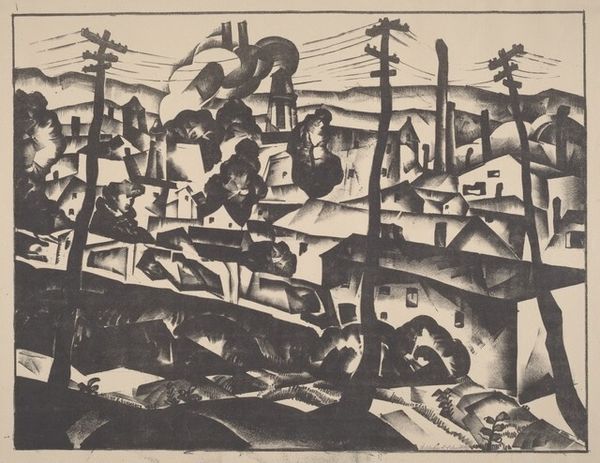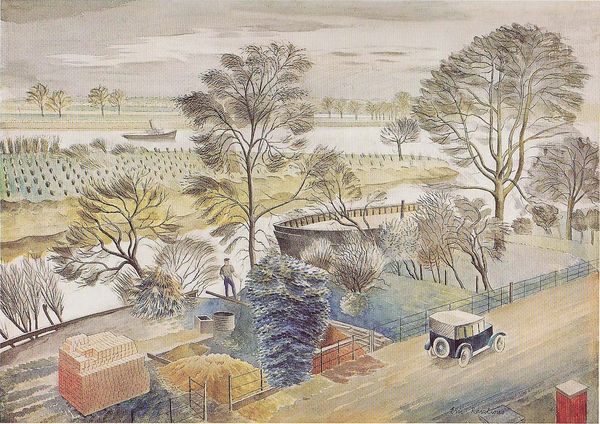
tempera, painting
#
tempera
#
painting
#
landscape
#
social-realism
#
genre-painting
Copyright: Ivan Generalic,Fair Use
Editor: We’re looking at Ivan Generalic’s “Village Backyard,” a tempera painting from 1937. The subdued palette makes me think of a quickly fading autumn day. The scene is filled with haystacks and workers attending to buildings. What do you make of the narrative being presented here? Curator: Well, this image offers an interesting insight into the socio-political context of rural life in 1930s Europe. Given the prevalence of social realism at the time, can we consider this artwork as simply depicting village life or possibly something more? What sort of subtle messages may lurk within the representation? Editor: I guess I see it as idyllic. But are you suggesting it is a sort of carefully constructed propaganda? Curator: Propaganda might be too strong a word. But it’s worth considering that imagery of rural labor was often used to promote particular visions of national identity. Ask yourself how does the scene idealize labor, and how does that ideal connect to broader political messages circulated by the regime or other art movements in Europe at that time? Editor: I see what you mean! Now that you point it out, everyone *is* busy and focused. It shows this romanticized view of harmony and industry... Curator: Precisely. And think about where this image would be displayed. In a gallery? A public building? How does the placement shape its meaning for viewers of the time? Consider also the power of folk art and its legitimization through the lens of the political ideologies and art movements dominant at the time. Editor: I hadn’t considered the setting so much. Thinking about it now makes a big difference! Thanks! Curator: Of course! Considering artwork as products and reflections of larger cultural forces enriches how we perceive art history.
Comments
No comments
Be the first to comment and join the conversation on the ultimate creative platform.
